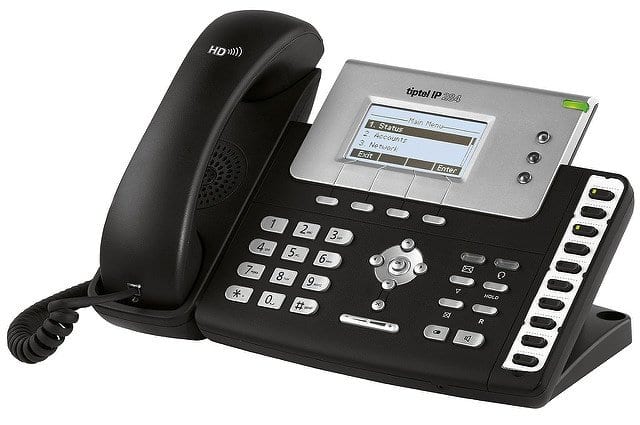How to Avoid Roaming Charges with VoIP – Save With Us
While cellular telecommunications networks make it possible for mobile phone users to enjoy the convenience of the internet, it’s technologies like VoIP (Voice over Internet Protocol) – coupled with some good sense and best practices – that make it a practical proposition to avoid roaming charges while travelling or living abroad.
There are a number of factors to consider. So here at LG Networks, we’ve put together this brief guide to acquaint you with the ins and outs of “internet by VoIP”, and to assist you in minimising or eliminating those data roaming costs that could mount up and ruin your overseas adventure, or venture.
Know What They’re Charging You
Before arriving at your travel destination, it’s a sensible idea to have a clear picture of exactly what kind of data roaming charges you’re likely to incur there.
For travellers in the European Union, the new “roam like at home” policy applies for phone calls to fixed and mobile numbers, SMS text messaging, and the use of data services outside your home country – and charges for data services are the same as in your (European) country of residence. Long story short: no additional roaming charges for EU residents travelling within the community.
There are some caveats to this. Notably, “roam like at home” rates apply only if you spend more time in your home country than abroad, or use your mobile phone more at home than abroad, typically within a four-month period (which can be monitored by your network carrier). Surcharges may be added if you don’t qualify under these conditions – but these charges are capped to €7.70 per GB of data, and the surcharge level will decrease each year, from 2018.
There’s a way around this, too. So long as you log in at least once a day to your domestic carrier’s network, this counts as a day “at home” – even if you travel on the same day. But calls to another EU or non-EU country made from home don’t qualify as roaming, so the “roam like at home” savings won’t apply
If you’re looking to avoid roaming charges in other regions, the picture isn’t quite so clear, so you’ll need to do some digging. Google searches and visits to online consumer resources are wise, and if you can make sense of the pricing information given on the websites run by your own mobile network and the most popular ones at your destination, this can also be a help.
But your best bet is to contact a flesh and blood representative of the network by phone or at their nearest branch office, to get a proper breakdown of their policy and tariffs for international data roaming. While you’re there, you should also investigate any special offers they have on international data bundles or partnerships with telecommunication networks operating in the area you intend to visit. Speaking of which…
Consider an International Data Plan
Your mobile network carrier may be able to offer an affordable package deal for international data usage – typically with a certain amount of up and downloaded data that you can use for a set period (per day, week, month, etc.) at a fixed price. This can also be an opportunity to shop for an international SMS bundle, as unmanaged costs for text messaging can soon mount up, as well.
Use Offline Apps
If you’re visiting unfamiliar territory, you’ll probably need to consult maps and street guides on a regular basis. One way to avoid roaming charges with location and GPS-based applications is to download all the geographical data you’re likely to need before you travel, and read your maps offline.
Offmaps.com for iOS and Maps.ME for Android are good starting points for this, while Google Maps also offers some options for downloading maps offline.
Disable Roaming?
Going to the Settings menu of your phone and disabling roaming (and doing a round check to ensure that all your installed apps got the message) is one way of avoiding roaming costs, by simply not roaming at all. Turning off your cellular data and any 3G or 4G options completes this approach.
There’s a question mark attached to this though, as it may be unavoidable at some point in your travels that you’ll be required to use an internet connection.
Buy A Local SIM Card
If you’re lucky enough to have a dual SIM handset (they’re pretty hard to come by, in some developed markets where network carriers like to tie their customers to one device maker), then you can purchase a SIM card for one of the in-country mobile networks at your destination, and avoid roaming costs by browsing the internet at domestic rates.
Get A Local Virtual Number
One of the beauties of VoIP technology and cloud-based telecommunication is the ability to own virtual phone numbers, which aren’t tied to a specific device or location.
Depending on the virtual phone service you choose, the company may have ties to mobile networks operating in the countries you intend to visit, and be able to assign you VoIP phone numbers that are registered in those nations. This can effectively enable you to avoid roaming costs by accessing data networks as a domestic subscriber.
Use VoIP To Limit Voice Charges
VoIP telephony also gives you the benefit of using the internet as the transmission medium for all your telephone calls. This has the immediate effect of lowering call tariffs, with long distance and international calls billed at local rates. Providers like LG Networks can give you the full run-down on the features and subscription rates available.
VoIP services like Skype or Google Voice enable you to automatically re-route calls made to your regular phone number to their virtual numbers, and offer additional features like converting voicemail to email or text. Low or even no-cost rates may apply to voice and video calls made from one device to another, on the same VoIP network.
Use Instant Messaging
Instant Messaging (IM) applications and platforms like WhatsApp can expand your overseas communication options by extending messaging capability between all the major mobile operating systems.
Use Free Wi-Fi?
Another question mark here, because of the well-documented dangers of using unsecured public Wi-Fi or other wireless technologies.
As long as you follow some security best practices:
- Verify the credentials and login procedures of the Wi-Fi network, by asking a member of staff or management at the hotspot location
- Use a Virtual Private Network or VPN (mobile app or online service) to encrypt your data connection, so eavesdroppers can’t listen or look in
- Don’t do anything requiring you to enter financial or sensitive personal information
- Log out when you’re done
You can avoid roaming charges by using local Wi-Fi services and VoIP in a combined strategy. Your first step is to get a mobile VoIP/virtual phone number, and set its account to have all communications forwarded to it. You can then use locally available free or low-cost Wi-Fi connections to access that VoIP number to make calls, and so on.
You won’t necessarily avoid roaming costs entirely with this “VoIP plus Wi-FI” approach, but you should at least enjoy significant savings on the tariff you might otherwise be paying.





